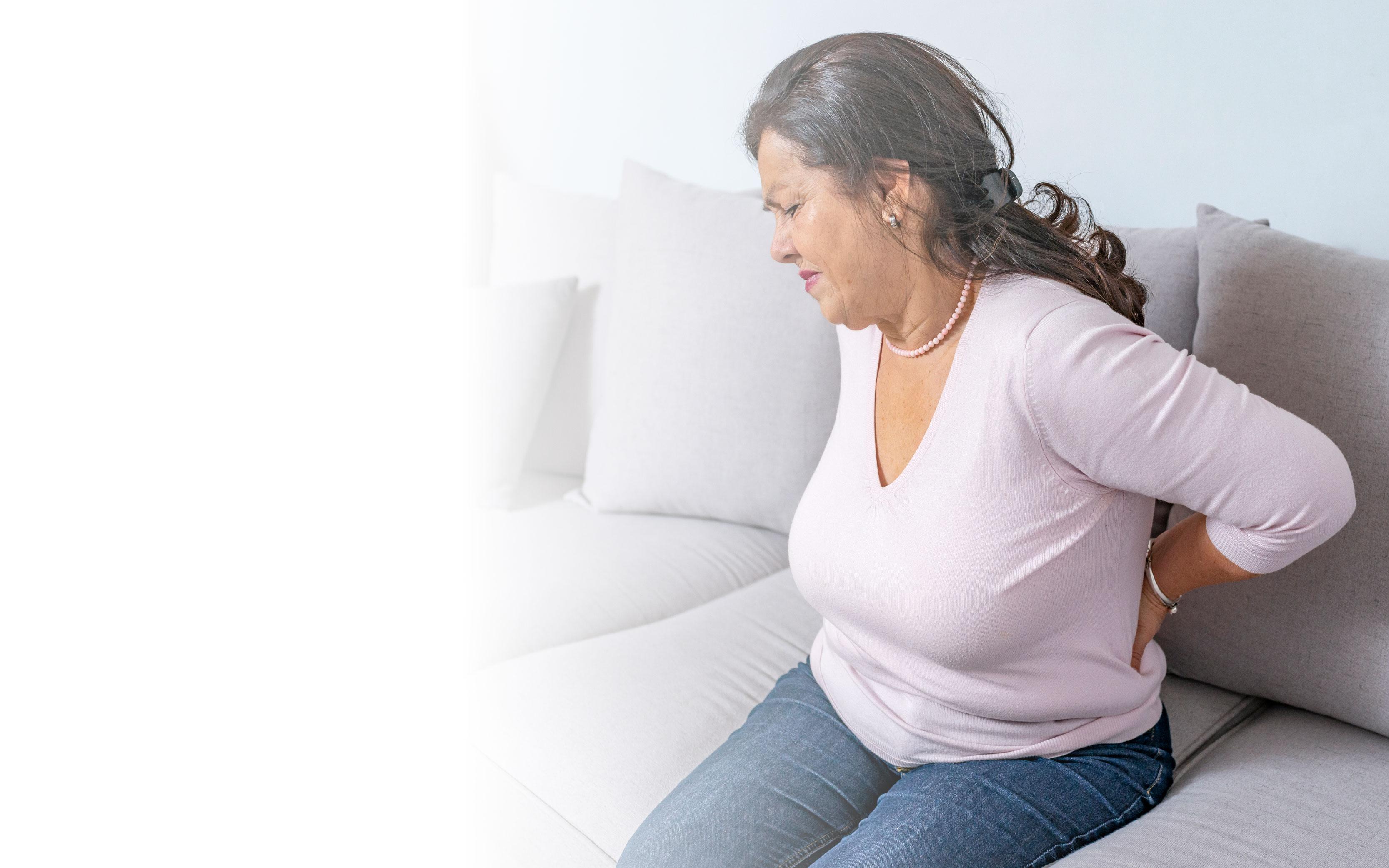
Back pain
Let’s identify your condition
If you’re in pain, one thing is true—there’s a condition causing that pain. Identifying that condition can be confusing. Our goal is to help you match your pain symptoms to the actual condition, because the more informed you are, the more empowered you’ll be to find a solution.
Facet joint pain
Facet joints are common sources of chronic back and neck pain.1 Like all joints, they go through wear and tear, causing pain as people age. Facet joints allow your vertebrae to move while keeping your spine properly aligned.
- Pain or tenderness in the lower back2
- Pain that increases with twisting at the waist or bending backward and extending the lower back2
- Pain that moves to the buttocks, hips or thighs with a deep, dull ache2
- Stiffness or difficulty with certain movements such as standing up straight or getting up out of a chair2
Related treatment
Radiofrequency ablation
Vertebral compression fracture
VCFs have a substantial and negative impact on the quality of life and day-to-day functioning of those afflicted. Acute and chronic pain in the elderly is commonly attributed to vertebral compression fractures, often leading to further health deterioration or the "downward spiral" and a loss of independence. Because there is a substantial risk of subsequent fractures in persons who have had a vertebral compression fracture,3 it is important that VCFs are diagnosed and treated early.
Related treatments
Balloon kyphoplasty
SpineJack procedure
Vertebroplasty
Metastatic vertebral compression fracture
Over 1.9 million Americans are diagnosed with cancer each year 5 and up to 76% of patients with bone metastases have metastases in the spine.6 Metastatic cancer often impacts the skeletal system, causing pain that makes every day more difficult, including those who have undergone radiation therapy without relief
Symptoms of metastatic vertebral compression fracture
- Sudden pain or tenderness in the lower back
- Pain that increases with twisting at the waist or bending backward and extending the lower back
- Pain that moves to the buttocks and hips or the back of the thighs—usually a deep, dull ache
- Stiffness or difficulty with certain movements (i.e., standing up straight or getting up out of a chair
Related treatments
Bone tumor ablation
Sacral insufficiency fracture
Back pain is sometimes caused by a sacral insufficiency fracture (SIF), an often-underdiagnosed condition in elderly patients that typically presents with severe low back pain, resulting in immobility. Too often, an SIF goes undiagnosed, meaning your real issue never gets solved. If you suspect that’s the reason for your pain, speak up and talk to your doctor.
Related treatment
Sacroplasty
Herniated disc
The spine contains 33 individual bones called vertebra that are stacked one on top of the other to form the spinal column. Each vertebra in your spine is separated by flat, spongy discs that act as "shock absorbers" to keep the bones from rubbing together. When one of the discs is damaged, it may bulge or break open. This is called a herniated disc, which may also be referred to as a ruptured or slipped disc.
Leg pain or lower back symptoms101112
- Pain usually occurs in only one leg
- Pain may be described as dull or throbbing in the lower back and may include stiffness
- Pain in the lower back may come and go
- Pain may get worse when coughing, sneezing, laughing or with other sudden movement
- Pain may get worse from prolonged standing or sitting, walking a short distance and bending forward
- Tingling "pins-and-needles" sensation or numbness in one leg
- Weakness in the leg, foot and/or toes
- Pain in the leg that is often described as sharp and electric shock-like
Related treatments
Disc decompression
Discography

